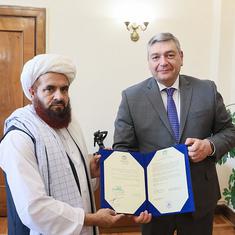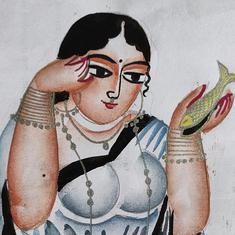Welcome to The India Fix by Shoaib Daniyal. A newsletter on Indian politics.
As always, if you’ve been sent this newsletter and like it, to get it in your inbox every week, sign up here (click on “follow”).
In the early hours of Wednesday, the Indian armed forces struck nine terrorist camps inside Pakistan and Pakistan-occupied Kashmir. This was in response to the April 22 attack in Pahalgam that left 26 dead.
War is about weapons. But it is also about narrative. Even as India delivered a military response to Pakistan for its support to cross-border terror, its post-operation messaging was also strong.
For one, India’s name for the military attack, Operation Sindoor, highlighted the fact that the Pahalgam terrorists had shot dead men in front of their families. The Hindi word “sindoor” refers to the vermillion pigment many Indian women use on their heads as a sign of marriage. Even more vivid were the secular optics of the government briefing on Wednesday morning.
Communal terror
Foreign Secretary Vikram Misri was emphatic that the aim of the terrorists in Pahalgam was to spread strife within Indian society. “The manner of the attack was also driven by the objective of provoking communal discord, both in Jammu and Kashmir and in the rest of the nation,” Misri said, referring to the fact that many male tourists in Kashmir had been shot dead after being asked about their faith; Hindus were targetted. “It is to the credit of the government and the people of India that these designs were foiled.”
The Foreign Secretary was flanked by Colonel Sofiya Qureshi and Wing Commander Vyomika Singh, who provided details of Operation Sindoor.
By explicitly saying that the terrorists in Pahalgam intended to stoke communal conflict and including a Muslim army officer as part of the high-voltage briefing, the Indian government was using explicitly secular messaging even as India militarily stared down its nuclear twin, Pakistan.
Misri’s statement was not made in a vacuum. Pahalgam was followed by a wave of bitter communalism within India. Several Hindutva ideologues tried to attack Indian Muslims using the cover of the Pakistan-backed terror strike.
Terrorists who attacked Hindus in Pehalgam wanted to provoke "communal discord" in India.
— Mohammed Zubair (@zoo_bear) May 7, 2025
These accounts such as @randomsena are helping them by targeting 25+ Crore Indian Muslims. Unfortunately the Indian government or the Police will never take any action against them. pic.twitter.com/yxv2VMVTM1
The online hate was so bitter that even Himanshi Narwal, wife of Indian Navy officer Lieutenant Vinay Narwal, who was killed in Pahalgam, was not spared. Her statement asking Indians not to “spew hate” against “Muslims and Kashmiris” attracted a spate of abuse from Hindutva supporters. It was so intense, the National Commission for Women stepped in to condemn the online abuse.
But it was not just online hate. There were physical attacks too. A day after Pahalgam, for example, Kashmiri shawl sellers were assaulted in Mussoorie, leading to at least 16 people fleeing from the city.
An exception
Even as the Modi government’s messaging post-Sindoor has been secular and attempted to counter the obvious aims of the Pahalgam terrorists, this level-headedness has been rare. Over the past decade, the Modi government has often stoked communal given its adherence to Hindutva as well as the electoral dividends that sectarian politics has paid for the BJP since the 1990s.
However, as Pahalgam and its aftermath shows, communal strife is not just a moral wrong – for India it is a major security faultline that its adversaries are more than happy to try to widen. India is a continent-sized country with most of its people desperately poor. To add constant communal strife to this mix is a surefire recipe for disaster.
The phrase “anti-national” is often thrown about loosely nowadays and I am always wary of using so blunt a phrase. But if there is one place it can be used, perhaps it applies to those who tried to exploit the Pahalgam terror attack to spread communal strife within Indian society.










